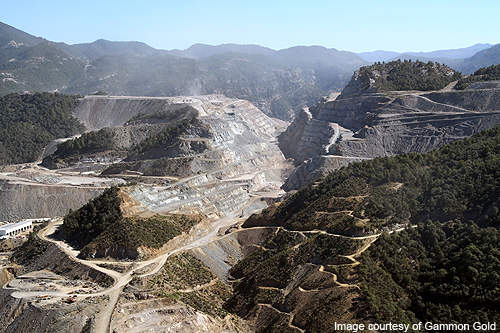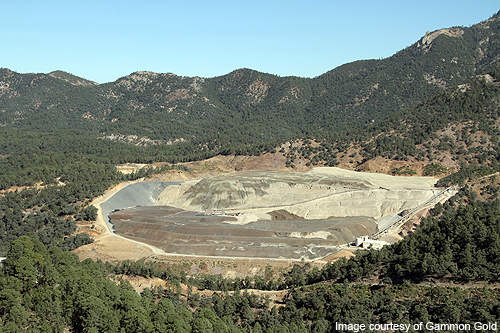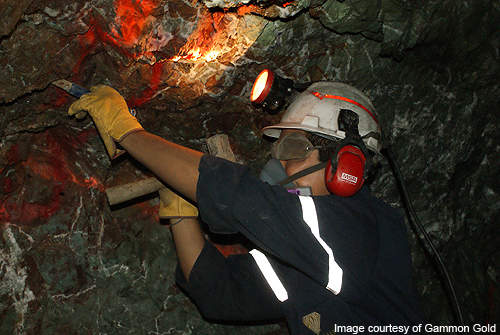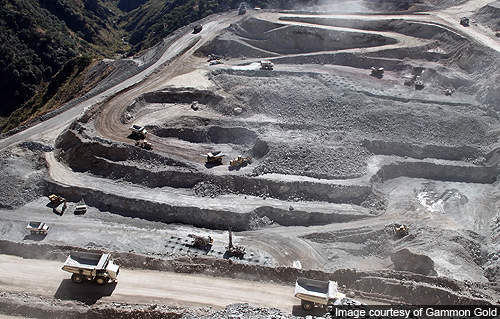The Ocampo gold and silver mine is located in the Sierra Madre Occidental, Chihuahua, Mexico. Owned by Gammon Gold, the mine spreads over 12,000ha and is the largest operating gold-silver mine currently in the Chihuahua state. The property includes an open pit as well as an underground mine.
Following the first phase of drilling in September 2010, the company made three new discoveries including an open pit (Los Molinas open pit) and two underground mines (Santa Eduviges and Santa Juliana / Belen underground).
The mine began commercial production in 2007. Production reached 7,018oz gold and 1.1m oz silver in the third quarter of 2010, marking a 10% increase over the previous quarter despite heavy rains. The mine has a relatively unrealised potential with the majority of the mine remaining to be explored.
Reserves
The mine contains 2.9mt of proven and probable reserves at the Ocampo underground, graded at 3.58g/t gold and 177g/t silver.
Proven and probable reserves at the Ocampo open pit are 61.2mt graded at 0.40g/t gold and 16g/t silver.
Geology
The mine lies within the ierra Madre Occidental, an extensive physiographic district which represents one of the largest un-metamorphosed andesite and dacite accumulations in the world.
The district extends from the centre of Mexico to the US border and is characterised by volcanic rocks.
The rocks have been cut across by plutonic rocks lying over a basement that are of a variety of ages from Precambrian through to Jurassic. The basement rocks are largely unexposed with unknown limits.
Intense volcanism in the area has resulted in a thick sequence of andesitic to rhyolitic composed volcanic flows, tuffs and agglomerates and associated intrusives. The sequence is overlain by porphyritic andesites that are interbedded with agglomerates and covered by Oligocene tuffs. The volcanic stratigraphy within the SMO forms part of a larger caldera with 60km diameter and has been segmented into two main groups; the upper volcanic group (UVG) and the lower volcanic group (LVG).
The LVG dominates the project area hosting the majority of gold and silver exploited from the mine to date. It includes large andesitic flows and tuffs. Volcanics towards the top of this group are more felsic. Localised beds of volcanoclastic sediments are also hosted.
Felsic ignimbrites, tuffs, flows and volcanoclastics make up the UVG rocks. The structural fabric in this group trends north-west. As some units were laid under basal surge conditions, the intense and prolonged volcanism resulted in the formation of hydrothermal mineralisation responsible for the several gold and silver mines in the area.
Mineralisation
The property hosts epithermal style gold-silver mineralisation. There are two major mineralisation-hosting structural areas, the northeast area and the Plaza de Gallos Refugio trend (PGR trend). Mineralogy and alteration found within the PGR and the north-east area signify the presence of low sulphidation quartz-adularia type epithermal systems.
The systems host quartz veins stockworks, and breccias bearing gold, silver, argentite pyrite and electrum with trace amounts of galena, chalcopytrite, rare tetrahedrite sphalerite and sulphosalt minerals. The mineralisation commonly displays open space filling textures.
High grade mineralisation occurs in north, west-north-west, north-west, north-east and east-west striking structures.
Quartz breccia forms the core of the structures and is surrounded by crustiform to comb textured quartz stockworks.
This mineralisation ranges up to 50m in thickness. Gold-silver mineralisation associated alteration comprises a silicified zone that envelopes the quartz breccia-stock works and argillic alteration.
The silicified structures are surrounded by an argillised halo.
Mining and processing
Mining at Ocampo is a combination of shrinkage stoping, long hole and cut and fill techniques.
Processing involves a 20,000tpd primary crusher that delivers 6,000tpd of feed to a high grade secondary crushing. Together with a low grade secondary crushing facility that operates at a capacity of 7,000tpd, the mine delivers 13,000tpa to the heap leach crushing facility.
The crushed material is stocked on heap leach pad following which it is irrigated with a cyanide solution for gold and silver dissolution.







